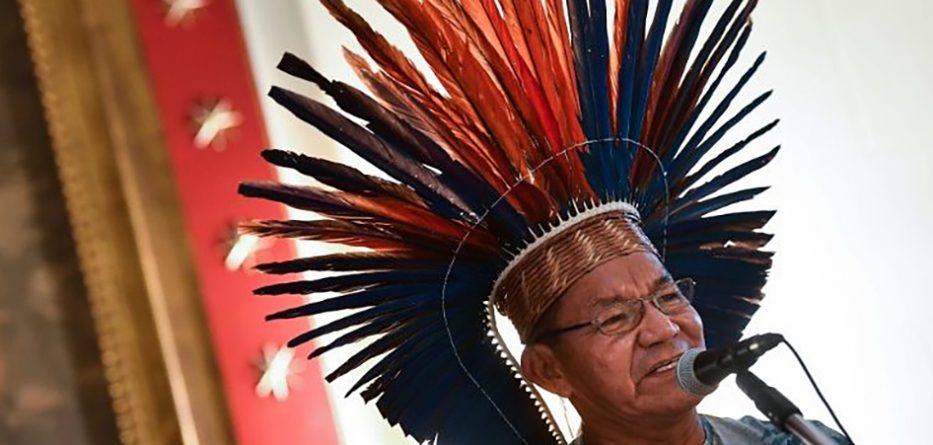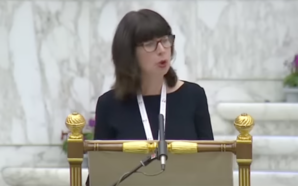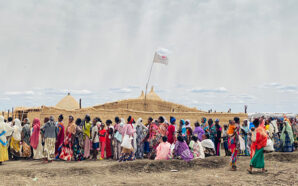Accusations of bowing to ‘paganism’ display an ignorance of how the Church has ‘baptised’ cultures throughout history
“There are more churches in Rome than casinos in Las Vegas!” said a friend from the United States many years ago when visiting the Eternal City for the very first time.
Indeed, there are more than 300 churches in the historic center alone; nearly one on every corner. In some cases, there are even two on the same “corner” – one on top of the other!
And why is that? It’s not just because Rome is considered the “center” of the Catholic Church, though that is part of it.
Proliferation of churches for prestige and trust
Just about every religious order has a church – or two, or three – in the city.
Sometimes it’s connected to the general curial (international headquarters) of the religious congregation.
But, over the centuries, constructing churches in Rome was a way for a fledgling order or Church movement to gain prestige and the trust of the pope and the Holy See.
The Society of Jesus is a good example of this. The order built its first edifice – the famous Church of the Gesù – in the 16th century. It was the original site of Jesuit HQ and home of the Father General until the order’s temporary suppression in 1773.
Nearly a century after the Gesù, the Jesuits built the Church of Sant’Ignazio, as a grand chapel of the adjacent Collegio Romano, precursor to the Pontifical Gregorian University.
Since then the Jesuits have built or taken over the administration or pastoral care of several other churches in Rome.
The personal prelature, Opus Dei, followed a similar pattern. Besides building a huge church on the premises of his headquarters in Rome’s posh Parioli neighborhood, it also acquired older, abandoned church properties in the city’s historic center.
The most famous is San Girolamo della Carità (St. Jerome) near the Piazza Farnese and the Venerable English College.
Opus Dei purchased the 17th century church in 1985. It is connected to the original site of the personal prelature’s Santa Croce University and library.
But San Girolamo is no longer the most prestigious church in the hands of Opus Dei.
That would be Sant’Appolinare, which dates back to around the 7th century.
The prelature was given the church in 1990 since it is part of the large and state-of-the-art complex near Piazza Navona that is the current home of its now-Pontifical University of Santa Croce.
In addition to these three churches, Opus Dei also administers two other parishes in Rome.
Putting a cross on ‘pagan’ temples
But this does not explain why there are hundreds of Catholic churches in the historic center of Rome.
The main reason for the church-on-every-corner phenomenon began in the late 4th century, several decades after Emperor Constantine granted Christianity legal status in the Roman Empire.
Up to that time the Eternal City was dotted with temples dedicated to worshipping Greek gods and Roman emperors.
With the Edict of Milan in 313 A.D. Christians were allowed to construct their own places of worship, which they often did on top of the homes or properties of wealthy patrons.
That changed in 380 A.D. when Emperor Theodosius issued the Edict of Thessalonica, making Christianity the official religion of the empire.
The Greek cults and mystery religions were banned. Their temples were confiscated. And in many cases their temples were converted into Christian churches.
Roman Christianity basically put a cross on these “pagan” temples and on the people that worshiped there.
Church authorities did not obliterate all the worshipping habits and beliefs of these new converts. They were not about to do so. So, instead, they “baptised” those elements that could be useful, or at least were not detrimental, for making people members of the Christian faith.
Mediterranean cults, Greco-Roman ethos
This is called inculturation. And all throughout Italy and the old Mediterranean world the signs of it are indelible.
The cult of Christian saints, miracles and holy myths – and how that is celebrated – has been influenced by these now baptised, pre-Christian religious customs.
Even the calendar of some the most important Christian festivals – including Christmas – originated from such inculturation.
The Christian faith – its architecture, forms of worship, symbols – continued to adapt from the Greek and Roman cultures and adopt what was useful from them.
The Roman Catholic Church has more exterior elements from the old Roman Empire than it does from the Nazareth or Jerusalem of Jesus’s time.
And so, we arrive at the alleged controversy over inculturation at the Synod of Bishops’ special assembly for the Pan-Amazon Region, which is now entering its third and final week in Rome.
The most vociferous opponents of Pope Francis, or at least those who oppose the way he is leading the Church, have gone apoplectic over the “pagan” symbols they see popping up at the Synod assembly.
Critics desperately defending a crumbling paradigm
They have made nasty remarks about the clothing and feathered headdresses of some indigenous people who have come from the Amazon as Synod participants.
They criticized a tree-planting ceremony that took place in the Vatican gardens for being heavily influenced by earth-worship and pagan symbols.
Our Catholic sisters and brothers who have been so critical of the pope and the Synod assembly have been putting in lots of extra hours and expending much energy into defending our beloved Church from… What?
It’s not from an attack on, or a watering down of, the Christian faith. That’s something else.
No, what they are defending against is inculturation.
They obviously believe there can be no deviation from the Catholic Church’s centuries-long Eurocentric paradigm.
But that paradigm has been crumbling and Francis has invested his pontificate in helping to bring forth a new paradigm that is based on unity in diversity.
And inculturation is an essential component of the pope’s vision for a renewed and reformed Church structure, which he spelled out clearly in his 2013 apostolic exhortation, Evangelii gaudium (Joy of the Gospel).
The question is how to bring the core truth of the Christian message – devoid of unnecessary and, often, unhelpful residuals or features of a fading European ethos – to peoples of other geographical and cultural realities.
Francis, like the many experts in missiology who have been saying since even before the Second Vatican Council (1962-65), believes that what we once thought of as essential to Christianity (i.e. parts of Greek philosophy and Roman culture) are actually only the accidents. They are, themselves, the fruit of the first inculuration of the faith.
He said as much during an Oct. 17 meeting with about 40 indigenous people who are in Rome for the Synod assembly on the Amazon.
After warning about the danger of trying to impose new forms of religious “colonization,” the pope noted that Christianity was born in the Jewish world. He said it was then developed in the Greek-Latin world before reaching other lands.
Francis reiterated the need to inculturate the Gospel so that “people can receive the announcement of Jesus with their own culture.”
And just as Christians did back in the fourth century — that may mean putting a cross on local customs and baptising certain elements of indigenous culture.
By Robert Mickens, reproduced with permission of La Croix International.








